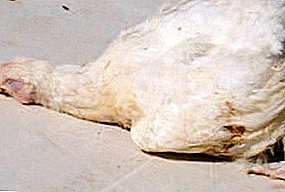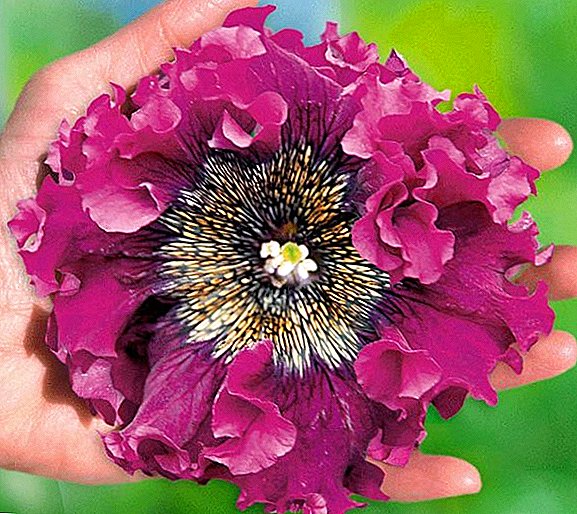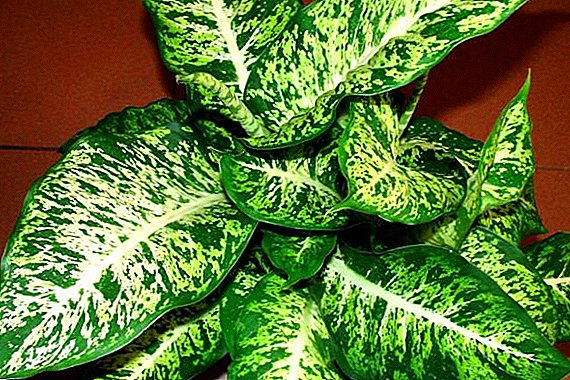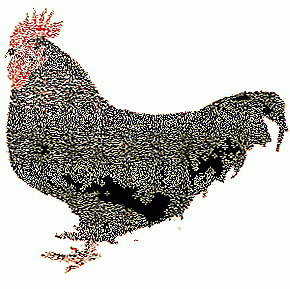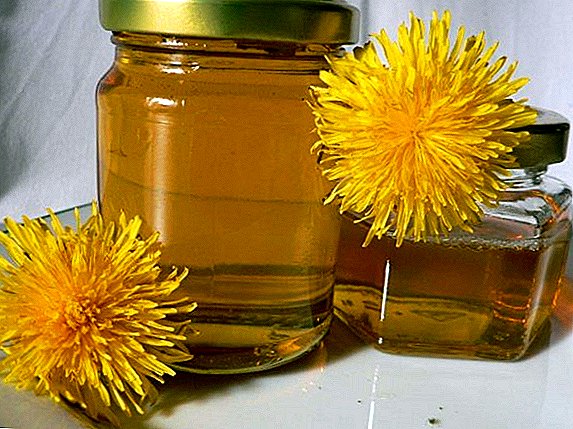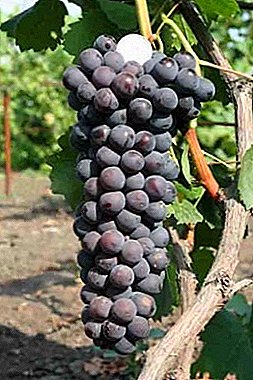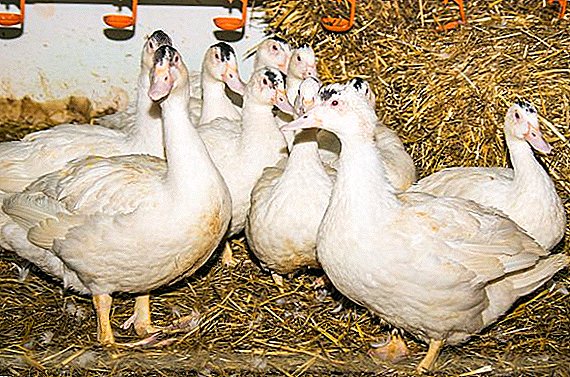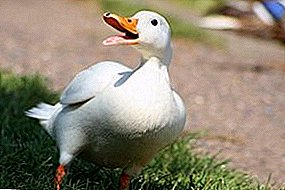 Broilers are called artificially bred interbreed hybrids of animals that belong to the meat direction. Broiler ducks, like chickens, quickly gain weight, which allows 1.5 months after the purchase of daily ducklings to get an adult with a maximum weight. Then we will talk about the choice of young broilers and creating the necessary conditions for its maintenance.
Broilers are called artificially bred interbreed hybrids of animals that belong to the meat direction. Broiler ducks, like chickens, quickly gain weight, which allows 1.5 months after the purchase of daily ducklings to get an adult with a maximum weight. Then we will talk about the choice of young broilers and creating the necessary conditions for its maintenance.
Broiler Duck Breeds
Common broiler crosses:
- White Beijing.
- American musk.
- Cherry Velli.
- Mulard
- Agidel
- Blagovarskaya.
- Moscow white.
- Medeo.
- Super M4.
- Hungarian motley.
- Runner indian
Consider the peculiarities of breeding such breeds of broiler ducks: agidel, white deer and Mulard.
How to choose broiler ducklings when buying
First of all, pay attention to the conditions and containers that contain ducklings. If it does not even smell clean and tidy, and the chicks in the literal sense of the word are sitting on top of each other, then you shouldn’t buy such young stock - the chance to lose most of the livestock is too high. 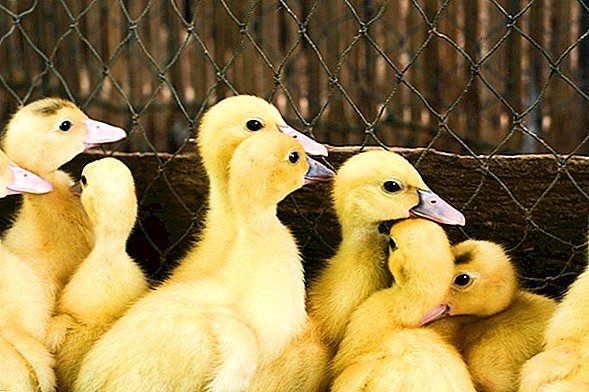 Ideally, before buying, find out more information about the seller, listen to reviews of customers or competitors. If a person has been trading for a long time, then his “product” is of good quality.
Ideally, before buying, find out more information about the seller, listen to reviews of customers or competitors. If a person has been trading for a long time, then his “product” is of good quality.
Regardless of the availability of reviews, you need to consider ducklings well. They must be alive, cheerful, and, most importantly, clean. Hygiene in the first days of life decides more than the quality of food, so in no case do not buy dirty ducklings, who spend hours in a box with their own excrement.
Pay attention to the eyes. They should shine, be clean, tearing or the presence of white clots indicates health problems. Next, look under the tail - if the chicks have digestive problems (diarrhea), then they can not be acquired. Such young animals require treatment costs, and weight gain will go slower. Be sure to check the legs and wings for sprains. 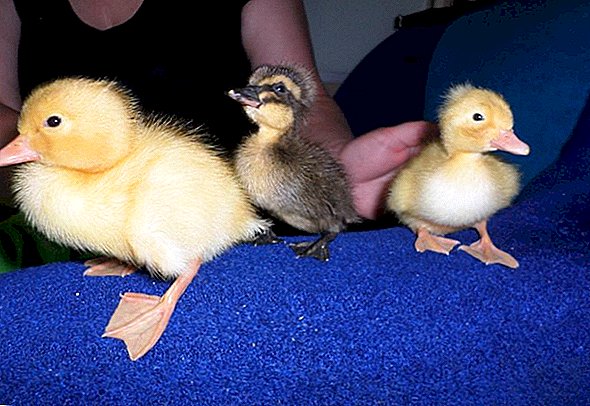 As for age, it is better to buy daily ducklings:
As for age, it is better to buy daily ducklings:
- first, you pay less;
- secondly, you will be sure that from the second day of life the youngsters are in acceptable conditions.
The longer the ducklings sell, the higher the chance that they will catch a cold or get poisoned.
Did you know? Ducks are found on all continents except Antarctica, and in total there are 110 species of these birds in the world.
Remember that you need to choose not the best of the worst, but really healthy youngsters, so if all the goods on the market are bad, then it is better to give up the purchase. Weak ducklings grow slowly, get sick more often. You can go to the minus in costs just because you bought a weak young. 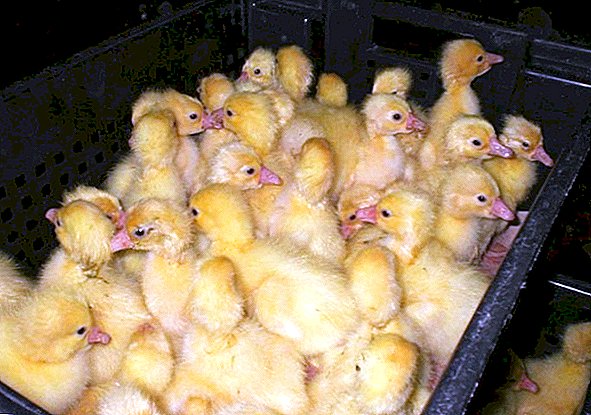
Growing at home
Ducks need to ensure acceptable conditions of detention, which directly affect immunity and weight gain. Broiler ducks are not kept in cold climates, which is taken into account when buying.
Floor content
If you have a room in which chickens were previously kept, then do not rush to buy a large number of ducklings. The fact is that the bird is kept by the floor method, respectively, each individual needs to be allocated a larger square than the hens.
The density of landing. With age, the density of landing decreases, as the size of individuals increases, so even with the purchase you need to correctly calculate everything. At the age of 21-30 days per 1 square. m should be no more than 9 ducklings. The stocking density of adult ducks is approximately equal to 5-6 individuals per square meter.  Bedding The most important point that you need to work out in detail. The material used is sawdust, peat or straw. The thickness of the layer should be about 14-16 cm. At the same time, fused lime is used to protect against pathogenic microorganisms, which is poured over the flooring. On one square meter spend 0.5 kg of the substance.
Bedding The most important point that you need to work out in detail. The material used is sawdust, peat or straw. The thickness of the layer should be about 14-16 cm. At the same time, fused lime is used to protect against pathogenic microorganisms, which is poured over the flooring. On one square meter spend 0.5 kg of the substance.
Agree, it is very important to provide the bird with comfortable conditions for development. Learn how to build a duck shed yourself.
As pollution becomes litter. On average, one individual consumes up to 10 kg of material (for the entire time of keeping). In this case, you must use lime each time.
Ventilation and humidity. These parameters must be carefully monitored. It is especially important to adjust the ventilation in summer, when the ducks have serious problems with heat exchange. 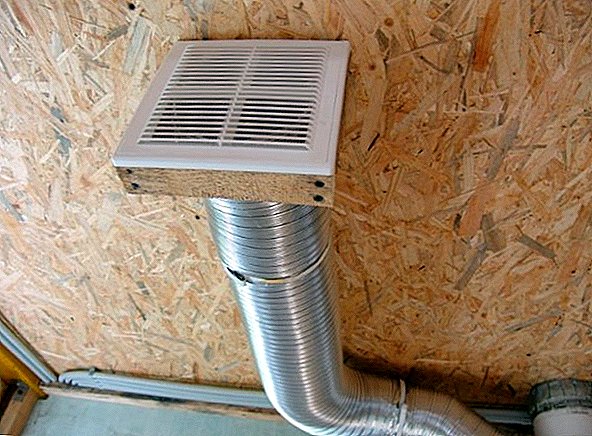 Ventilation in the duckling unit. The air exchange rate should be 6 cubic meters. m per hour per individual. That is, if you have 50 ducks, then 300 cubic meters of fresh air should come in an hour. In winter, the intensity is reduced to 1 cubic meter / h.
Ventilation in the duckling unit. The air exchange rate should be 6 cubic meters. m per hour per individual. That is, if you have 50 ducks, then 300 cubic meters of fresh air should come in an hour. In winter, the intensity is reduced to 1 cubic meter / h.
Humidity should always be in the range of 65-75%. Too dry air has a negative effect on mucous membranes, and too humid creates a favorable environment for bacteria and fungi.
Important! The premises must be disinfected before settling.
Dilution in cages
This option allows you to significantly save space. It is used in large poultry farms, where it is impossible to use the outdoor method of housing. 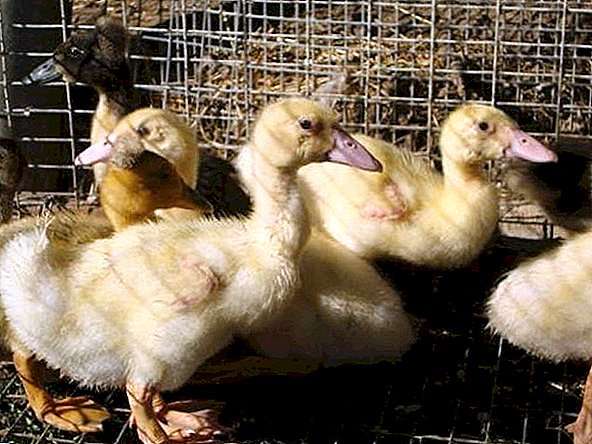 Density. Given that the cage in all loses the floor version, it is impossible to plant ducklings with high density. With minimum cage parameters of 70x70 cm with a height of 35 cm, up to 40 ducklings can be placed, which have not turned 14 days. Further, the number of ducklings in one cage is reduced to 8-10.
Density. Given that the cage in all loses the floor version, it is impossible to plant ducklings with high density. With minimum cage parameters of 70x70 cm with a height of 35 cm, up to 40 ducklings can be placed, which have not turned 14 days. Further, the number of ducklings in one cage is reduced to 8-10.
Material cage and bedding. Iron, plywood or wood can be used as a material. In this case, sharp edges should be absent. Before disembarking the ducklings, the mesh bottom is lined with paper to eliminate injuries to the extremities. When the young grow up, the paper is removed.
Important! For the cellular content are suitable only individuals of the same age and identical complexion.
Feeding and cleaning. Timely feeding and harvesting should be taken seriously, as with the cellular content the bird does not have free access to food and water, and also can not do anything with accumulated feces. For this reason, a drinking bowl and a feeder are placed in each cage. Vessels should be washed regularly. Feces and other wastes are removed from pallets daily. 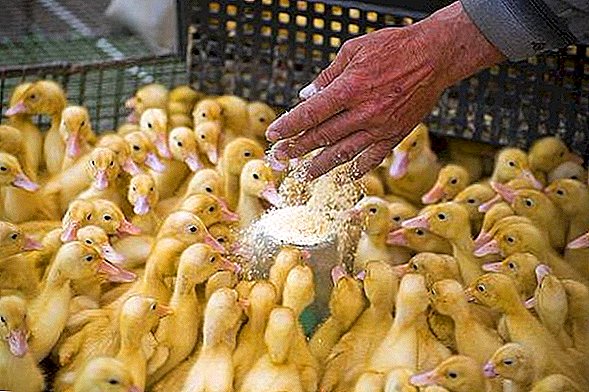
What else is needed
The room, which contains the bird, as well as walking, should be equipped so that the ducks feel comfortable, could at the right time get a portion of water or food.
Additional lighting
You should not identify broiler ducks with broiler chickens - in terms of coverage, their needs differ. In the first week of life, the ducklings fearfully relate to excessive lighting, so lamps of no more than 50 W are used, and daylight hours are limited to 18 hours. The intensity of the light should be in the range of 15-20 lux.
It is recommended to install matte or blue lamps. This light has a beneficial effect on the amount of food eaten, and also does not cause concern to the bird. 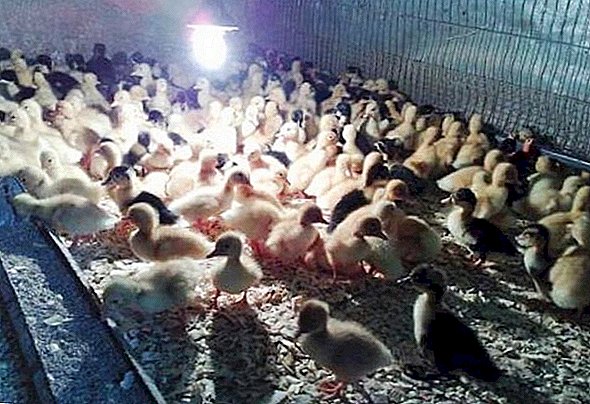
Temperature maintenance
Remember that ducklings under the age of 2 weeks inclusively are unable to control and regulate body temperature, therefore it is important to maintain a temperature in the room that is identical to that of the body. The air should be heated to 30 ° C, and the temperature of the litter should not fall below 28 ° C.
From 2 to 3 weeks, the figures are reduced to 26 ° C, and after the third week - to 20 ° C. Adults can tolerate lower temperatures, but not negative ones, which is important to remember.
Drinkers and feeders
Feeding trough. The material used is iron or polished wood. Plastic is a good alternative, but it is short-lived. Do not use aluminum or galvanized iron.  The feeder is filled only 1/3, so its volume should be large so that you do not have to fill up the feed several times. The standard is one feeder for 20 individuals.
The feeder is filled only 1/3, so its volume should be large so that you do not have to fill up the feed several times. The standard is one feeder for 20 individuals.
Drinking bowl In order to exclude the fall of young stock due to a cold, it is better to immediately buy vacuum drinkers, which will not allow the ducklings to splash in the water. This is very important, since wetting will immediately lead to hypothermia.
If you do not want to use vacuum options, then arrange everything so that individuals can completely immerse their heads in water, but have not had the opportunity to get into the water bowl. 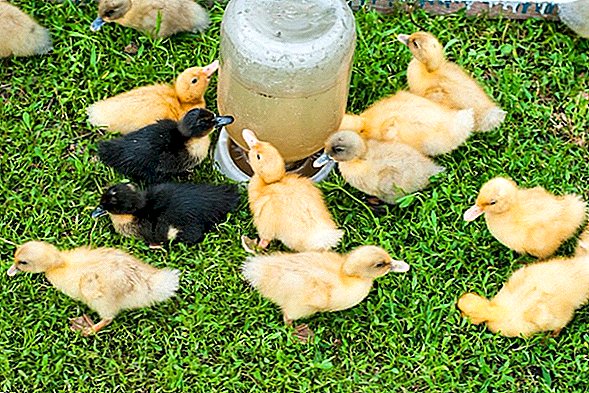
Walking yard
The walking yard is necessary for the ducklings to receive the necessary dose of ultraviolet radiation in the warm season, as well as to harden their immunity. It is possible to let the kids into the fresh air from 3-4 days, if the air temperature is approximately equal to their body temperature (30 ° С).
At the same time, it is important to control the time the ducklings spend on the run - as soon as the bird starts to stray into a pile, it is immediately driven into the room.
The corral must be fenced with materials that can not hurt the ducks. There should also be a canopy, the area of which is 25% of the square of the pen. The courtyard area should be such that on 1 square. m accounted for no more than 2 individuals. 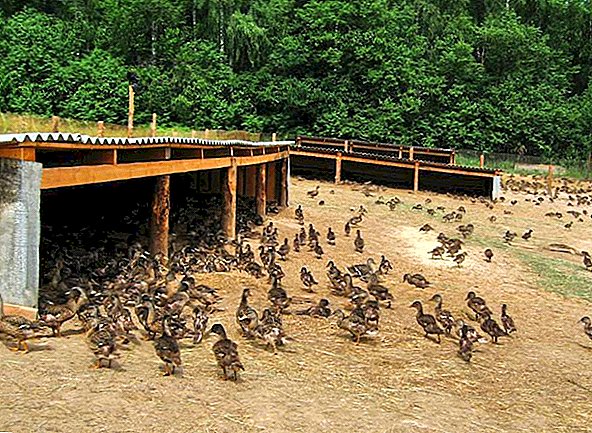
Do you need access to water
Access to water should be as limited as possible. First, ducks must gain weight, and not spend calories on physical activity. Secondly, after water procedures the bird will be dirty and wet. Minimal temperature fluctuations or strong winds will lead to serious colds.
Consider in more detail what diseases are dangerous for ducks.
Open access to water should be only if you keep a small livestock of up to 10 individuals: this way you will create a living corner, which will be a pleasure to watch. In this case, the reservoir must be large, natural, otherwise it will turn into a swamp in a few days. 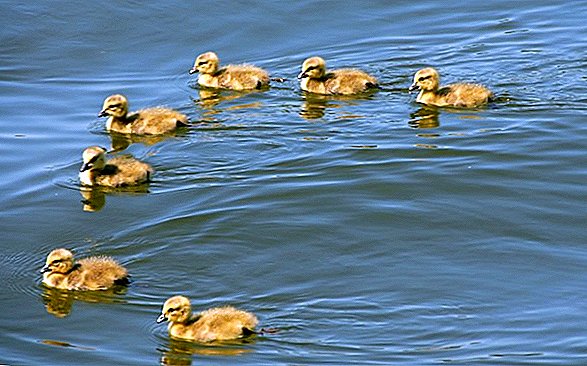
Feeding Broiler Ducks
Starting diet Starter feed give ducklings from 1 to 10 days of life, inclusive. The first feeding must be done within 18 hours after hatching so that the young do not have problems.
Did you know? Ducks are omnivores, so they can eat both plant food and animal food: in natural conditions the bird catches fish, insects and worms. This helps her small furrows on the beak.
For feeding use branded quality mixtures in the form of powder or small granules. If ready-made feeds cannot be purchased, then use the following mix:
- corn - 50%;
- oats - 25%;
- barley - 10%;
- meal - 5%;
- a mixture of premix, chalk, salt and fish meal - 10%.
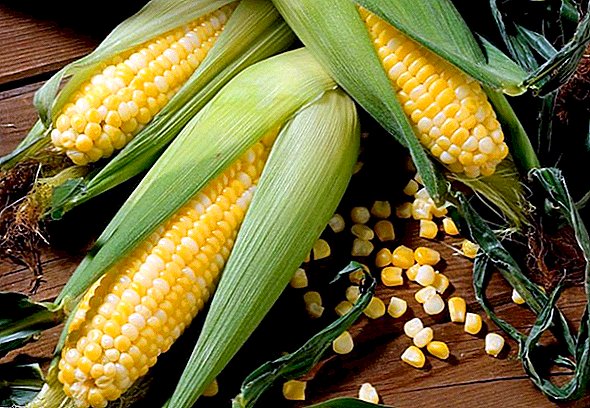 Growth. For growth of growth feed ducklings at 11 days of life. It is assumed a gradual abandonment of small fractional feed, as well as moisturizing additives. This feeding option is used up to 26 days inclusive. The transition from the starting feed to the growth is carried out within 2 weeks.
Growth. For growth of growth feed ducklings at 11 days of life. It is assumed a gradual abandonment of small fractional feed, as well as moisturizing additives. This feeding option is used up to 26 days inclusive. The transition from the starting feed to the growth is carried out within 2 weeks.At this time, weight gain can slow down significantly, but do not worry. This feature is associated with a change in diet.
At 3 weeks of age, ducklings should consume concentrated feed, which contains a small amount of protein. This composition can be used for feeding young animals:
- corn - 45%;
- wheat - 30%;
- meal - 10%;
- yeast - 3%;
- fish meal - 5%;
- grass meal - 6.7%;
- chalk - 1.5%;
- premix - 1%;
- salt - 0.2%.
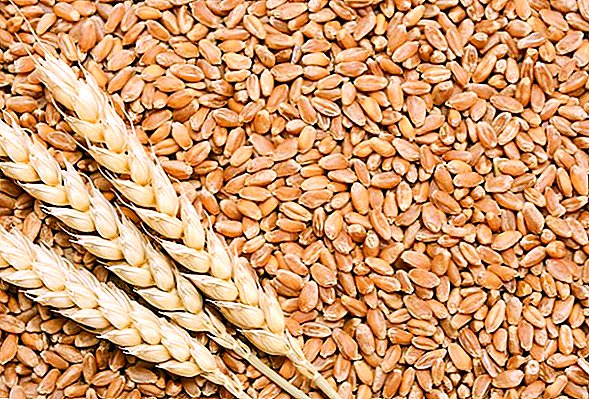 Finishing. Finishing food is introduced into the diet from 26-27 days of life. Already adult birds give a scattering of coarse grinding or granulated version, the diameter of which exceeds 4 mm.
Finishing. Finishing food is introduced into the diet from 26-27 days of life. Already adult birds give a scattering of coarse grinding or granulated version, the diameter of which exceeds 4 mm.The easiest way to purchase ready-made finishing feed for ducks, as creating the ideal option at home is quite problematic. There are many varieties of finishing feed. Some farmers, to get the maximum weight gain in the last time interval, replace 90% of the diet with corn.
Proper nutrition is the key to good bird health. Read on how to properly formulate a diet for ducks at home, how to feed small ducklings, and also how to independently prepare compound feed for ducks.
The remaining 10% are vitamin mixtures, fish meal, chalk and salt. Others bring the percentage of grain in the diet to 60. It is difficult to choose the best option, so you should build on the costs and expectations. 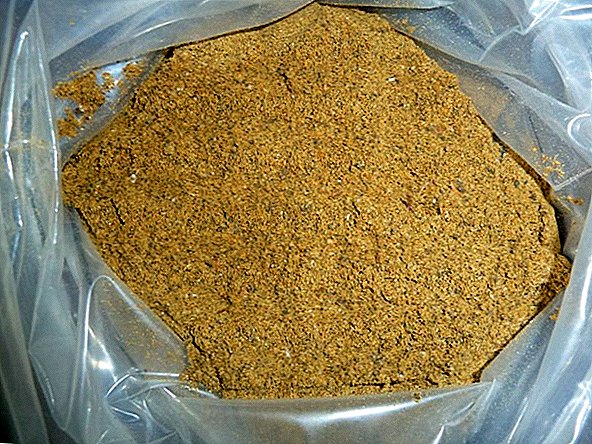 The composition of the complete finishing feed:
The composition of the complete finishing feed:
- cereals (wheat, corn, barley) - 60 g;
- skim milk - 35 g;
- boiled potatoes - 30 g;
- greens - 20 g;
- yeast - 7 g;
- Meal - 5 g;
- meat and bone meal - 5 g;
- cottage cheese - 5 g;
- chalk - 3 g;
- salt - 0.2 g
- at the age of 10-15 days young animals are fed 6 to 8 times a day;
- from 15 to 30 days they give food 4-6 times a day;
- from 31 days before slaughter, adult ducks are fed at least 3 times a day.
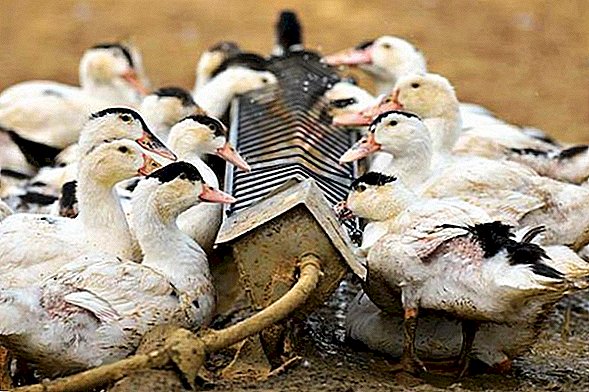
Through how much can you cut into meat
It is profitable to slaughter ducks at 42-45 days of life, since after this the process of juvenile molting begins, the bird has a hard plumage. Also, ducks consume a huge amount of food, which increases the cost of meat every day.
You will probably be interested to learn how to properly hammer a duck, how to pluck a duck without hemp, and also read about how to make duck fat.
Do not forget that the meat is gradually "getting older", it becomes tough. For this reason, delaying with slaughter can lead to serious material losses. In this case, it is better to kill ahead of time, rather than when the products no longer meet the standards.
The content of broiler ducks is similar to broiler chickens, but there are many differences that should always be remembered. If you decide to do this business, then we recommend even at the stage of buying young stock to worry about the food supply and the material that will be used as litter.



